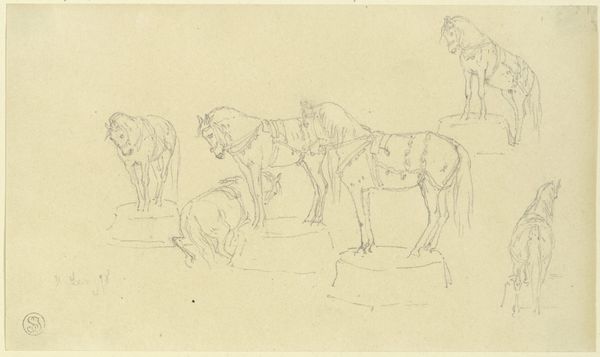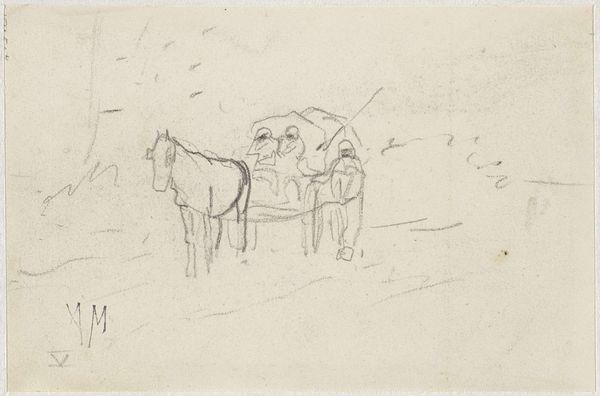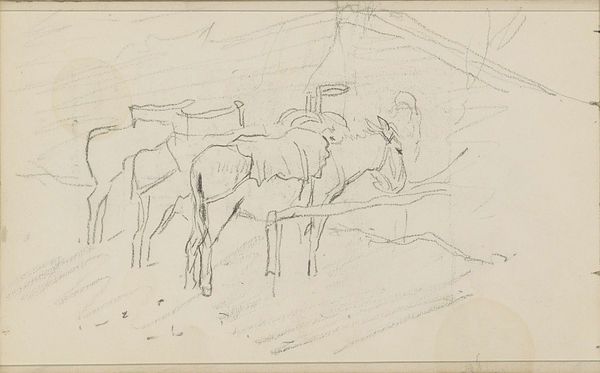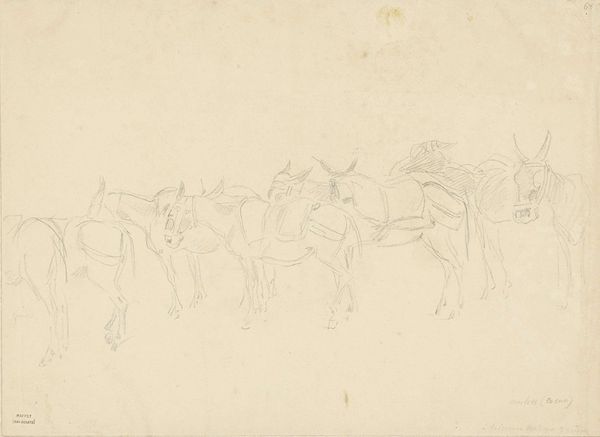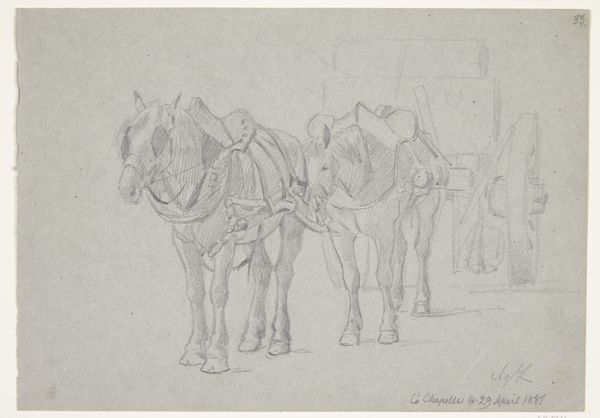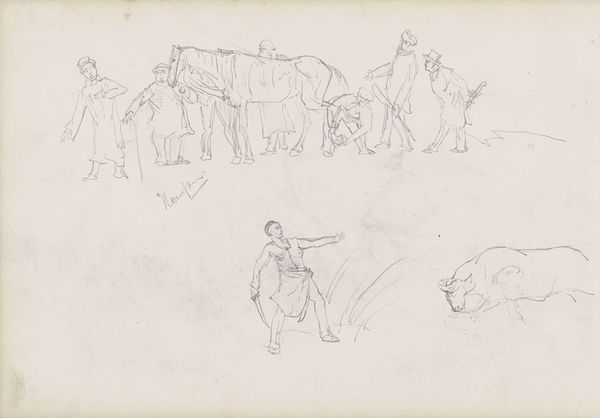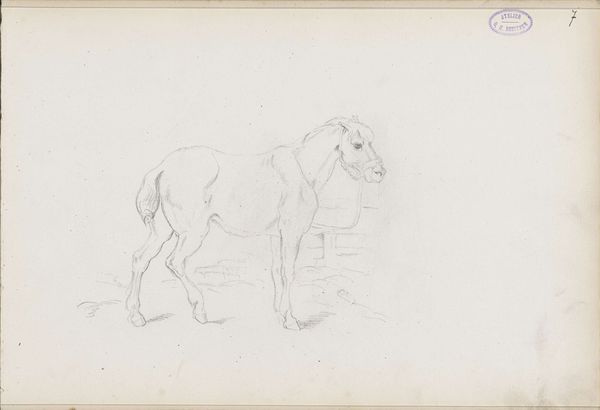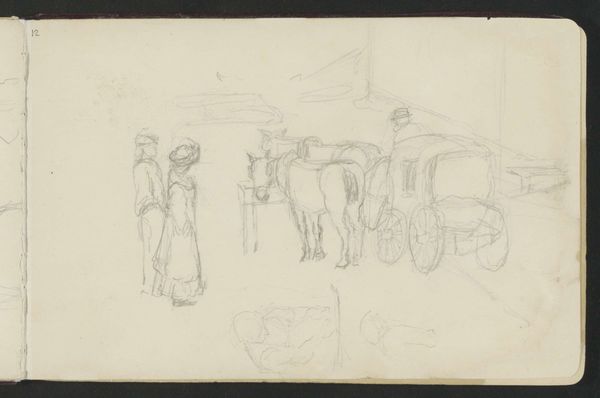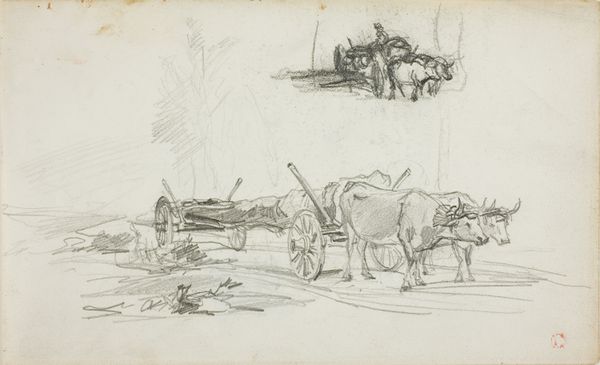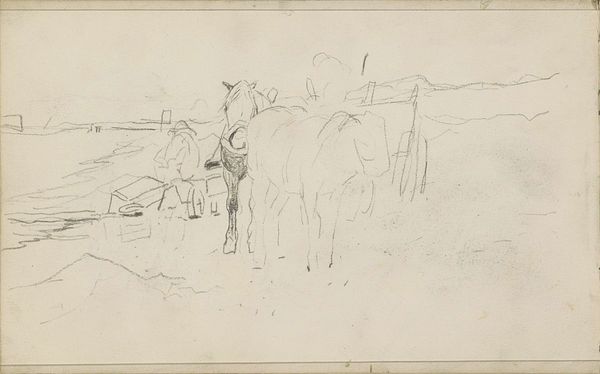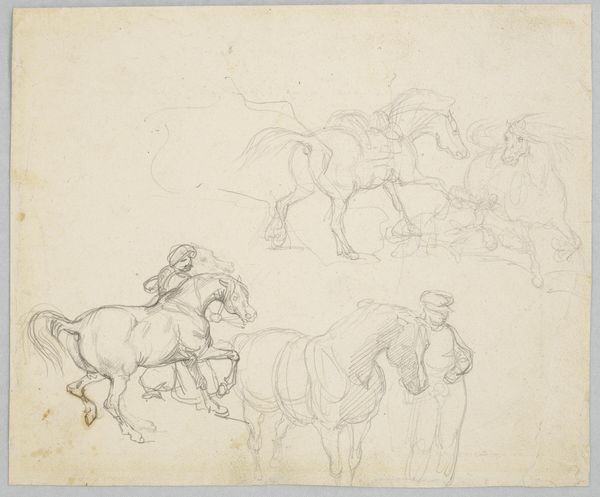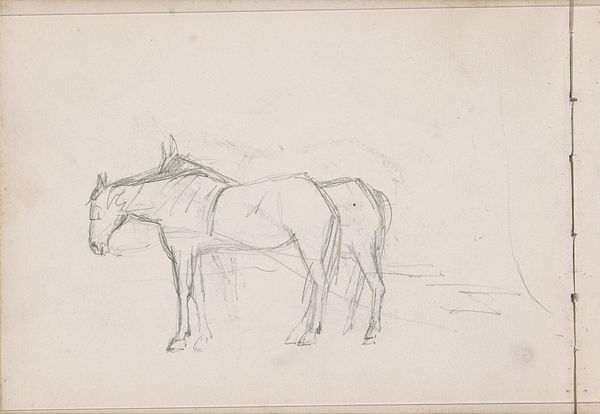
drawing, pencil
#
drawing
#
landscape
#
figuration
#
pencil
#
horse
#
realism
Copyright: Rijks Museum: Open Domain
Curator: Cornelis Vreedenburgh's "Drie getuigde paarden," created sometime between 1890 and 1946, rendered in pencil, now housed here at the Rijksmuseum, it's an intriguing glimpse into a world reliant on animal power. Editor: There's a quiet dignity to this scene. It's almost austere, the bare pencil lines outlining the weight and patience of these horses. You can feel their stillness. Curator: Horses as symbols carry layers of meaning. For centuries, they represented status, labor, even war. Here, however, the draft horses seem ordinary. What do you feel they might symbolize, if anything, to us now? Editor: Perhaps their quiet endurance represents the overlooked contributions of marginalized labor? The harnesses speak to that history of working-class subjugation and physical demands, so ingrained that the individual suffering is subsumed to industry. It's a common theme for Dutch masters, where animals are used to exemplify that sort of servitude. Curator: The composition is quite striking in its simplicity; almost a primal scene etched onto paper, a symbol of our taming of the natural world. What do we impose when we choose to domesticate or even display these animals? The image, sketched as a quick reference is as telling of human control over beasts, for labor and dominance, as it is the story of a simple drawing in preparation for something bigger. Editor: I appreciate your calling to focus attention on the drawing as preparation and also a way to explore deeper concepts. Vreedenburgh probably observed that even at rest, under our demands, these animals will never actually know peace. Even if in that act of control, or dominance, we show respect through portraiture. But there's still an intrinsic friction to recognize, to bear witness to in every use of such subjugated strength. Curator: Yes, it holds space for both observation and indictment, reflecting our complex relationship with the natural world, even now. It gives food for thought on how art, even a preliminary sketch like this, preserves memories and ethics. Editor: Exactly, Cornelis Vreedenburgh’s unassuming sketch creates dialogue between our colonial pasts with this enduring present, even across those dimensions of nature and power.
Comments
No comments
Be the first to comment and join the conversation on the ultimate creative platform.
